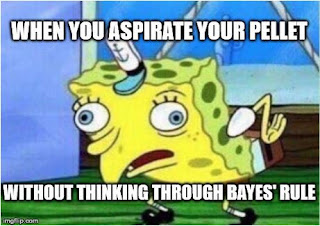The data doesn't lie
Perhaps the hardest part of writing the Mod 1 data summary was grappling with the data. Going in, we’d hoped that everything would go smoothly. We’d hoped that we would successfully purify our protein and that we would see our ligands bind on the first try. After all, it’s easy to interpret data when everything is significant and it exactly matches your hypotheses. But that’s not what happens when you’re really doing science.
After my lab partner and I had done the protein purification, we expected to get a beautiful band on our SDS-PAGE of exactly the right size. Instead, we barely got the one we expected and it was accompanied by several other unexplained bands. What could we have done wrong? We had so meticulously gone through each step in the purification, and yet here we were with only a partially purified sample.
We experienced the same thing when we went to analyze the data from the secondary assays. Our data just did not fit our hypothesis, and our error bars were gigantic. How could we even begin to explain our data when nothing is significant?
If one thing is clear after analyzing this data it’s that unexpected and seemingly unexplainable data will always make me want to rip my hair out. But perhaps that’s a good thing.
I had a teacher in high school who used to say that the data never lies. This idea is something that has always stuck with me. We often say that our data is wrong when it comes out different from how we expected. We say our data is wrong when we really mean that we made some error, or that our methods were flawed, or that it just doesn’t fit our interpretation. But none of this means our data is wrong, it just means that we’re wrong in some way, and the thing that makes science science is our drive to figure out why we’re wrong.
When my lab partner and I went back to talk about our huge error bars in our PPIase assay, we didn’t really have anything conclusive to say. But over the course of writing the report we realized that it wasn’t really our job to force the data to fit our hypothesis. The point of a results section was to report the results, and that means thinking and interpreting the data but never disregarding it. Overall, I think the most important lesson from writing the Mod 1 report is to be a good scientist and respect your data.
-Domenic Narducci



Comments
Post a Comment